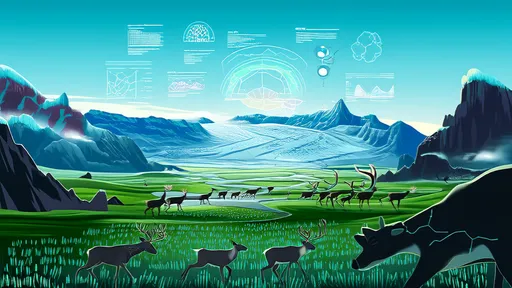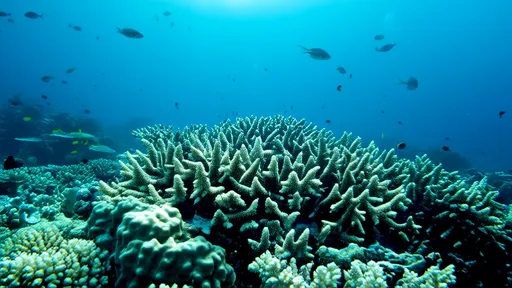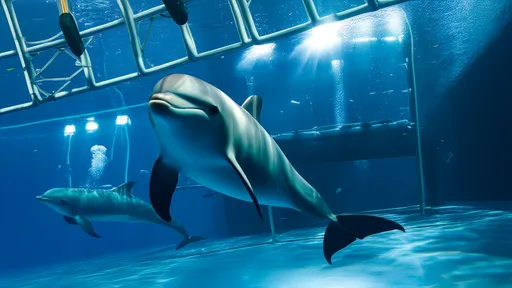The vibrant undersea cities built by corals are facing an existential threat. For decades, marine biologists have observed a disturbing phenomenon: corals, under stress, are expelling the very organisms that give them life and color. This breakdown of a fundamental partnership, a divorce at a microscopic level, is sending shockwaves through the world's oceans, and the primary cause is relentlessly rising sea temperatures.
At the heart of every healthy coral reef is a miraculous symbiotic relationship. The coral animal, a polyp, provides a protected home and the compounds necessary for photosynthesis to millions of single-celled algae called zooxanthellae. In return, these algal tenants, residing within the coral's own tissues, harness the sun's energy to produce sugars, providing up to 90% of the coral's nutritional needs. This efficient arrangement is the engine that allows corals to build the massive limestone skeletons that form the complex, three-dimensional structures of a reef. It is this partnership that paints the reef in breathtaking hues of brown, green, and red.
When seawater temperatures rise even one or two degrees Celsius above the typical summer maximum, this delicate balance is shattered. The coral, stressed by the heat, undergoes a physiological crisis. In a desperate act of self-preservation, the coral polyp ejects its symbiotic algae. The precise trigger is complex, involving the production of toxic reactive oxygen molecules by the heat-stressed algae, which forces the coral to evict its source of food to avoid tissue damage. The result is coral bleaching. The animal is still alive, but without its colorful partners, its transparent tissue reveals the stark white limestone skeleton beneath. A bleached coral is a starving coral, living on its energy reserves and highly vulnerable to disease.
The ecological domino effect of widespread bleaching is catastrophic. A reef is not just a collection of corals; it is a metropolis of marine life. The complex architecture provides critical habitat, nursery grounds, and hunting territories for an estimated quarter of all marine species. Parrotfish, angelfish, and wrasses dart through its crevices. Lobsters and octopuses hide in its caves. The reef's productivity supports everything from tiny plankton to massive sharks. When the corals bleach and die, the entire structure begins to crumble literally and figuratively. The loss of living coral cover leads to a dramatic decline in fish abundance and diversity. Species that rely exclusively on the reef for survival face local extinction. The local fishing industries that depend on these fish stocks collapse, threatening food security and livelihoods for millions of people in coastal communities.
Furthermore, healthy reefs act as natural breakwaters, dissipating up to 97% of a wave's energy before it reaches the shore. The loss of these submerged barriers leaves coastlines exposed to increased erosion, storm surges, and flooding, causing billions of dollars in damage to infrastructure and potentially displacing communities. The economic value of a living reef, in terms of tourism, fisheries, and coastal protection, is immense. A dead reef offers none of these services.
The driver of this thermal stress is unequivocally human-induced climate change. The burning of fossil fuels has thickened the blanket of greenhouse gases in our atmosphere, trapping excess heat. The oceans have absorbed over 90% of this excess heat, causing a steady rise in sea surface temperatures. Mass bleaching events, once rare and isolated occurrences, are now happening with alarming frequency and on a global scale. The Great Barrier Reef, the world's largest coral reef system, has suffered five mass bleaching events since 1998, with back-to-back events in 2016 and 2017 devastating nearly half of its corals. Scientists warn that the window for these ecosystems to recover between such events is closing rapidly. We are now witnessing bleaching in reefs that were once considered thermal refuges, areas previously thought to be immune to warming.
While reducing greenhouse gas emissions is the only long-term solution to curb global warming, scientists and conservationists are exploring stopgap measures to buy time for reefs. These include identifying and protecting naturally heat-resistant coral strains, actively restoring damaged reefs by planting lab-raised corals, and even developing assisted evolution techniques to breed more resilient super-corals. However, these efforts are akin to applying a band-aid to a deep wound if the underlying cause is not addressed. Without drastic and immediate global action to mitigate climate change, these innovative solutions will be overwhelmed by the relentless pace of warming.
The stark white skeletons of bleached reefs are a ghostly monument to a changing planet. They are a silent, underwater scream of distress. The collapse of the coral-algae symbiosis is more than an ecological curiosity; it is a profound warning. It demonstrates with terrifying clarity how the intricate web of life can be unraveled by a seemingly small shift in temperature. The fate of the world's coral reefs is a bellwether for the health of our entire global ecosystem. Their survival is not just about saving beautiful underwater landscapes; it is about preserving the biodiversity, economic stability, and coastal security that billions of people rely on. The choice we make today on climate action will determine whether these vibrant marine cities become barren graveyards or manage to persist as beacons of resilience in an warmer ocean.

By /Aug 21, 2025

By /Aug 21, 2025

By /Aug 21, 2025

By /Aug 21, 2025

By /Aug 21, 2025

By /Aug 21, 2025

By /Aug 21, 2025

By /Aug 21, 2025

By /Aug 21, 2025

By /Aug 21, 2025

By /Aug 21, 2025

By /Aug 21, 2025

By /Aug 21, 2025

By /Aug 21, 2025

By /Aug 21, 2025

By /Aug 21, 2025

By /Aug 21, 2025

By /Aug 21, 2025

By /Aug 21, 2025

By /Aug 21, 2025